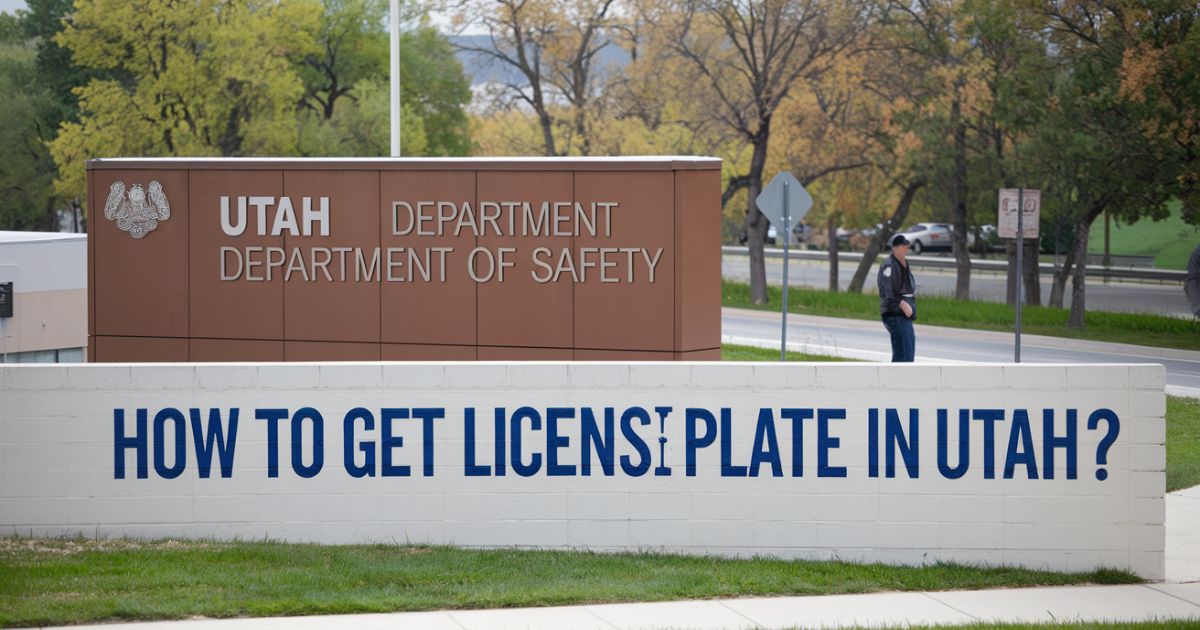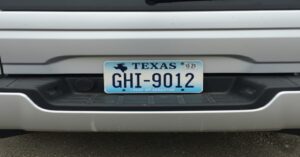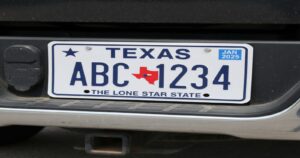A license plate in Utah is a legal identifier for vehicles. It displays a unique combination of letters and numbers. Plates are required for all registered vehicles in the state. They help law enforcement and authorities track vehicles on the road.
Getting a license plate in Utah is an important step for every vehicle owner. Whether you are a new resident or buying a car, knowing the process is essential. You’ll need a few documents, like your ID and proof of ownership. This guide will walk you through each step to ensure you get your plates quickly and easily.
To get a license plate in Utah, start by gathering necessary documents like your ID, proof of residency, and vehicle title. Next, complete the vehicle registration application online or at a local DMV office. Pay the required fees for registration and plates. Once approved, you will receive your license plates, allowing you to drive legally.
Introduction to License Plates in Utah
In Utah, license plates serve as essential identification for vehicles, providing a way to register and monitor them on the roads. The state offers a variety of plates, including standard, specialty, and personalized options, catering to different preferences and vehicle types.
Each plate has specific designs and purposes, such as supporting charities, honoring military service, or representing university affiliations. Understanding the importance of license plates goes beyond compliance; they also enhance public safety and help law enforcement identify vehicles. This guide explores the process of obtaining a license plate in Utah, ensuring residents can navigate registration with ease.
Read more: Can I get a Front License Plate in Florida?
Summary of Steps and Requirements for Getting a License Plate in Utah
| Step | Description | Requirements |
|---|---|---|
| Gather Required Documents | Collect documents like ID, proof of residency, vehicle title, and proof of insurance. | Utah driver’s license or state-issued ID, utility bill, lease agreement, vehicle title, insurance |
| Complete Application | Fill out the vehicle registration application online or at the local DMV. | Application form, available online or at DMV |
| Pay Fees | Pay-based registration fees and any additional fees for specialty or personalized plates. | Registration fee, specialty plate fees (if any) |
| Submit Application | Apply online through the Utah DMV website or in person at the local DMV office. | Completed form, payment of fees |
| Receive License Plates | Get your plates either immediately if applied in person, or by mail if online. | |
| Apply for Personalized Plates | Pay based registration fees and any additional fees for specialty or personalized plates. | Availability check, personalized plate form |
| Renew License Plates | Renew every 1-2 years, with proof of insurance and current registration. | Renewal notice, proof of insurance |
Utah License Plate Types

In Utah, you have to display license plates on all registered vehicles in Utah. UT offers three regular issue tags as well as a range of additional ones, the majority of which may be personalized.
Most automobiles are required to have Utah front and rear license plates. Trailers and motorcycles, however, may only have them attached to the back. There are two main types of decals offered by the UT DMV: standard and personalized.
Standard and Personalized License Plates
Standard license plates are typically issued when you register your vehicle and feature a uniform design. If you prefer a unique look and wish to customize your plate with a specific combination of letters and numbers, you will need to apply for personalized plates in Utah, which usually come at an additional cost.
Before submitting your application for a custom design, it’s advisable to conduct a quick search to ensure your desired combination is available. Organizations, colleges, and military personnel are also eligible to apply for custom designs for their plates.
The Utah DMV allows online applications, and the limitations on the number of characters vary based on the type of vehicle. For standard plates, you can use up to seven characters, while the “In God We Trust” plate is limited to five characters, and motorcycle plates may only have four characters.
Temporary License Plates
Typically, all U.S. states, including Utah, provide drivers with temporary tags to display on their cars and motorcycles while awaiting their permanent plates. These temporary tags resemble standard plates but feature the word Temporary.
If you purchased your vehicle through a dealer, they will assist you in obtaining temporary tags. For private sales, you can request them at your local DMV. You’ll need to present a bill of sale along with a signed title from both you and the seller.
The permit is valid from the date you receive it, and there is an initial fee of $6.
Eligibility Requirements for Obtaining a License Plate
To obtain a license plate in Utah, certain eligibility requirements must be met. First, applicants must be at least 16 years old, and those under 18 need a parent or guardian’s co-signature. Valid identification, such as a Utah driver’s license or state-issued ID, is necessary to verify identity.
Additionally, proof of residency in Utah is required, which can be demonstrated through documents like utility bills or lease agreements. Applicants must also provide proof of vehicle ownership, such as a title or bill of sale, ensuring that the vehicle is registered in the applicant’s name before acquiring a license plate.
Step-by-Step Process to Get a License Plate
To obtain a license plate in Utah, follow this step-by-step process to ensure a smooth registration experience. First, gather the necessary documentation, then complete the application, pay the required fees, and receive your plates. Below are the detailed steps:
Step-by-Step Process to Get a License Plate
Gather Required Documents:
- Valid identification (Utah driver’s license or state-issued ID).
- Proof of residency (utility bill, lease agreement, etc.).
- Vehicle title or bill of sale if the vehicle was purchased.
- Proof of insurance coverage.
Complete the Vehicle Registration Application:
- Fill out the application form, available online or at your local DMV office.
Pay Registration Fees:
- Be prepared to pay the base registration fee, plate fee, and any additional fees for specialty or personalized plates.
Submit Your Application:
- If applying online, apply through the Utah DMV website. For in-person applications, visit your local DMV office.
Receive Your License Plates:
- If applied in person, you may receive your plates immediately. If registered online, they will be mailed to your registered address.
How to Apply for Personalized and Specialty Plates

Applying for personalized and specialty plates in Utah allows vehicle owners to express their individuality or support causes that matter to them. To begin, check the availability of your desired plate combination on the Utah DMV website.
Next, complete the specific application form for personalized or specialty plates, which can be submitted online or in person. Be prepared to pay any additional fees associated with these plates. Once your application is processed and approved, you will receive your unique or specialty plates in the mail or immediately, depending on how you applied.
- Check Availability: Visit the Utah DMV website to see if your desired plate combination is available.
- Complete Application: Fill out the personalized or specialty plate application form.
- Submit Your Application: You can apply online or in person at a local DMV office.
- Pay Additional Fees: Be ready to pay the extra fees associated with personalized or specialty plates.
- Receive Your Plates: Get your plates mailed to you or issued immediately upon approval.
Understanding Fees and Costs Associated with License Plates
When obtaining a license plate in Utah, it’s essential to understand the various fees and costs involved in the registration process. The primary expense is the base registration fee, which varies depending on the type and weight of the vehicle. Additionally, there may be a one-time plate fee for issuing the license plates.
If you opt for specialty or personalized plates, extra fees will apply. Other costs may include sales tax based on the vehicle’s purchase price and potential local fees. Being aware of these costs beforehand helps ensure a smooth registration process and prevents unexpected expenses.
Renewing Your License Plates in Utah
Renewing your license plates in Utah is a straightforward process that typically occurs every one or two years, depending on the vehicle type. Vehicle owners will receive a renewal notice by mail approximately 30 days before their registration expires. To renew, gather necessary documents, including proof of insurance and the current vehicle registration.
You can complete the renewal online through the Utah DMV website, by mail, or in person at a local DMV office. Be prepared to pay the renewal fee, which is generally lower than the initial registration fee. Once processed, you will receive a new registration sticker for your plates.
Tips for a Smooth License Plate Application Experience
- Double-Check Documentation: Before your visit, verify that you have all necessary documents, such as identification, proof of residency, and vehicle title, to avoid delays.
- Use Online Services: Whenever possible, take advantage of the Utah DMV’s online services for applications and renewals to save time and streamline the process.
- Be Aware of Fees: Familiarize yourself with the various fees associated with registration and be prepared to pay them at the time of application.
- Plan Ahead: Allow plenty of time for your application to be processed, especially if applying close to the expiration date of your current registration.
- Visit During Off-Peak Hours: If you are applying in person, try to visit the DMV during off-peak hours to avoid long wait times.
- Keep Records: Maintain copies of all documents submitted and any receipts for fees paid to keep track of your registration status.
Conclusion
In conclusion, obtaining a license plate in Utah is a straightforward process that involves several key steps. By gathering the necessary documentation, completing the registration application, and paying the required fees, vehicle owners can ensure compliance with state regulations.
Understanding the different types of license plates available such as standard, specialty, and personalized options allows individuals to select the plate that best suits their needs and preferences. Additionally, staying informed about renewal processes and requirements helps maintain valid registration. Whether you are a new resident or a first-time vehicle owner, following these guidelines will streamline your experience, making it easier to enjoy the open roads of Utah legally and confidently.
FAQs
What documents do I need to get a license plate in Utah?
You need a valid ID, proof of residency, vehicle title, and proof of insurance.
Can I apply for a license plate online?
Yes, you can complete the application online through the Utah DMV website.
How much does it cost to get a license plate in Utah?
Fees vary based on the type of vehicle and the plate selected, typically ranging from $30 to $100.
How long does it take to receive my license plates?
If applied in person, you may receive them immediately; online applications are mailed and take a few days.
What should I do if my license plates are lost?
Report the loss to local law enforcement and apply for replacement plates at the DMV.









